4 Fungal Diseases to be Cautious of this Spring
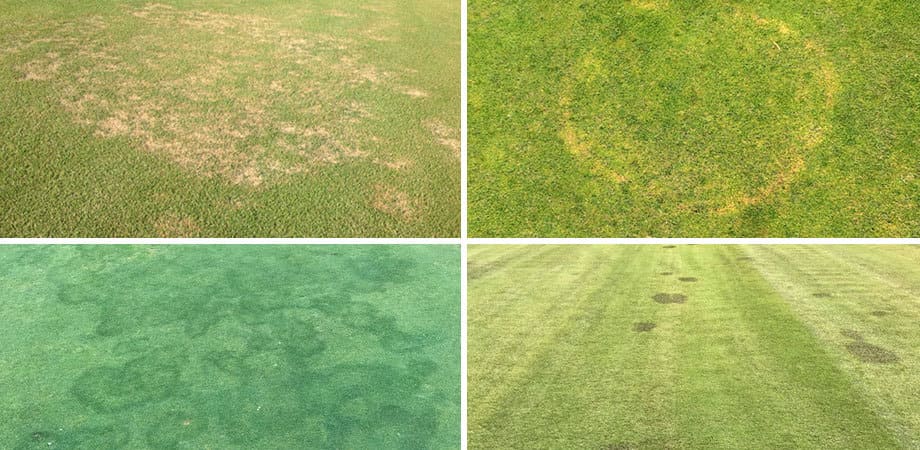
Zoysia Patch (Large Patch)
April showers can bring May flowers and zoysia patch. Zoysia patch is a fungal disease that attacks zoysia in both the fall and spring. The extended period of saturated soil and overall wetness of April create prime conditions for zoysia patch to develop. Zoysia patch attacks the leaf sheaths, stolons, and crowns of the turfgrass plant.
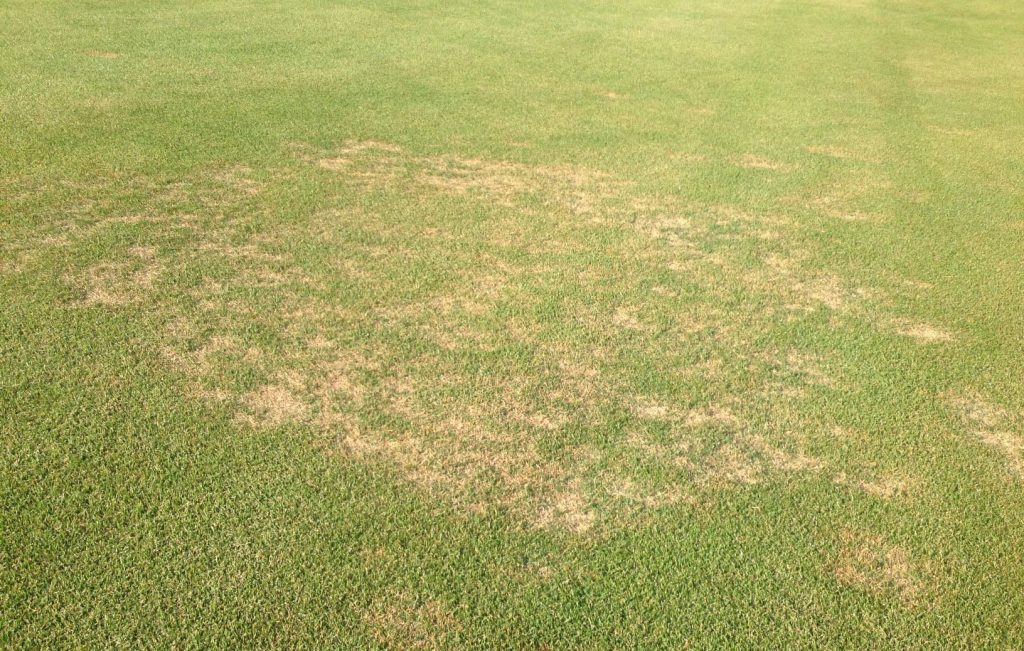
The treatment for zoysia patch is very simple. There are two fall applications, with the timeframe for the initial application starting from mid-September to early October. The remaining application is applied one month later. In the spring, a third application is applied from mid-March to late April. Timing will be weather specific for the area.
ArmorTech TEB 360 XL and ArmorTech Zoxy-T are excellent products to combat zoysia patch. ArmorTech TEB 360 XL is applied at a rate of .6oz/1000, twice in the fall and once in the spring. ArmorTech Zoxy-T is applied at a rate of .75oz/1000, twice in the fall and once in the spring.
If you missed your fall applications, you can still treat for zoysia patch in the spring. However, it is not as recommended. Higher rates of ArmorTech TEB 360 XL and Zoxy-T will be needed, with the end result being the same amount of product being put down as applying two applications (TEB 360 XL at 1.6oz/1000 and Zoxy-T at 1.5 oz/1000).
If, for budget reasons, three applications cannot be applied, do a fall and spring application of TEB XL 360 and Zoxy-T. If budget is keeping you from treating the entire infected areas, hit the areas that are historically worse with the three apps and do less in areas that are not affected as bad. Also, controlling moisture levels heading into fall and keeping the zoysia moisture level dryer has shown to reduce zoysia patch severity in the spring.
Spring Dead Spot
Spring dead spot is produced by three fungi, which infect the roots of bermudagrass in late summer to early fall. The fungi rot away the roots, stolons, and crowns of bermudagrass, making it weaker and more vulnerable to freezing injury. As bermudagrass ends dormancy in the spring and green up begins, straw-colored, circular patches of turf appear, which are full of still-dormant bermuda. Ultimately, the dormant turf dies and collapses to create sunken areas in the turf. Spring dead spot can occur in the same area again.
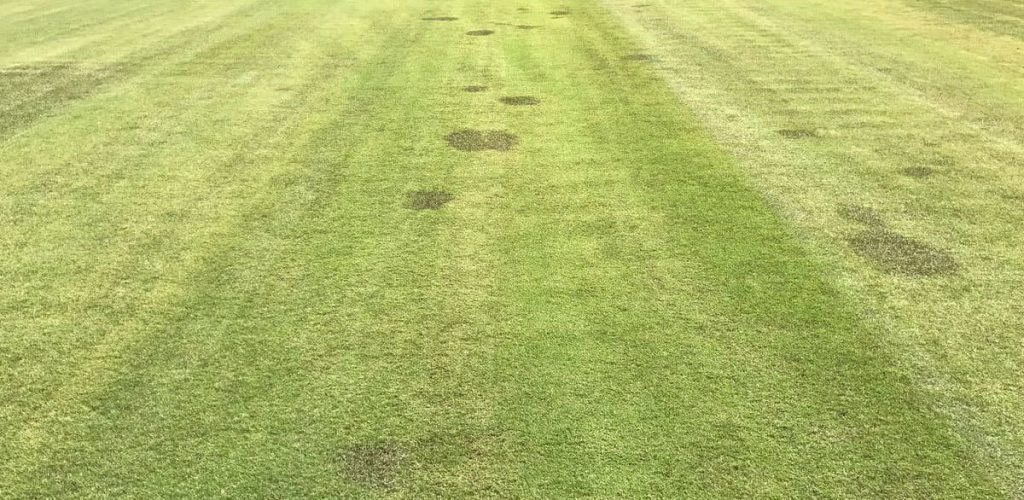
Spring dead spot cannot be entirely managed by a singular management practice. Regular fungicide applications in conjunction with proper fertility and cultural practices will provide the best results for slowing spring dead spot.
Proper fertility can significantly slow spring dead spot. Avoiding the use of nitrogen fertilizers in the later summer and early fall will help bermuda maintain a hardiness for the winter and avoid injury. Controlling adequate potassium fertility will also help bermudagrass avoid winter injury and control disease.
Maintaining root zone acidity (a pH of 5.8-6.2) is vital. Using greens grade fertilizers with ammonium sulfate will help with maintaining adequate pH. Spoon feeding greens at lower rates and using slower release fertilizers, like 13-2-13 or 17-0-17, are highly recommended. Foliar-Pak A.S. Fusion, Minors and Amperage, on a two-week interval, will also help with acidity. An application of 0-0-25 in the fall at a rate of about 2 lbs/1000, applications or organic fertilizers, such as Healthy Grow 10-3-2, and applications of lime and gypsum would be recommended for maintaining proper pH as well, especially in the fall.
Fungicide applications for spring dead spot should not be seen as a cure-all. Proper applications of fungicide twice in the fall such as ArmorTech TEB 360 XL (.6oz/1000) Zoxy-T (.75oz/1000) and Zoxy (.75oz/1000) will help aid in spring dead spot control.
Cultural practices to use to slow down spring dead spot are reducing thatch build up, aerifying, and verticutting.
If a spring dead spot outbreak occurs in the spring, here’s what to do to help bermuda recover. Applications to push growth without nitrogen are recommended, as excessive nitrogen will increase the severity for the following year. Normal granular (13-2-13, 17-0-17) applications with weekly/biweekly applications of Foliar-Pak Foundation 40, Micros Plus, Manganese, and Amperage will help speed recovery with less nitrogen. Also reduce thatch, such as verticutting and aerification to promote healthy a roots.
Brown Ring Patch
In the spring and early summer, brown ring patch makes its appearance, manifesting itself in yellow/tan rings. These rings are often irregularly shaped with jagged edges.
In extreme cases of brown ring patch, the disease can take Poa annua to the crown. DMI and strobilurin fungicides have demonstrated their effectiveness for control when used at high rates. It’s vital to consider your recent and future PGR applications when applying DMI chemistry. You want to avoid over-regulating turf growth.
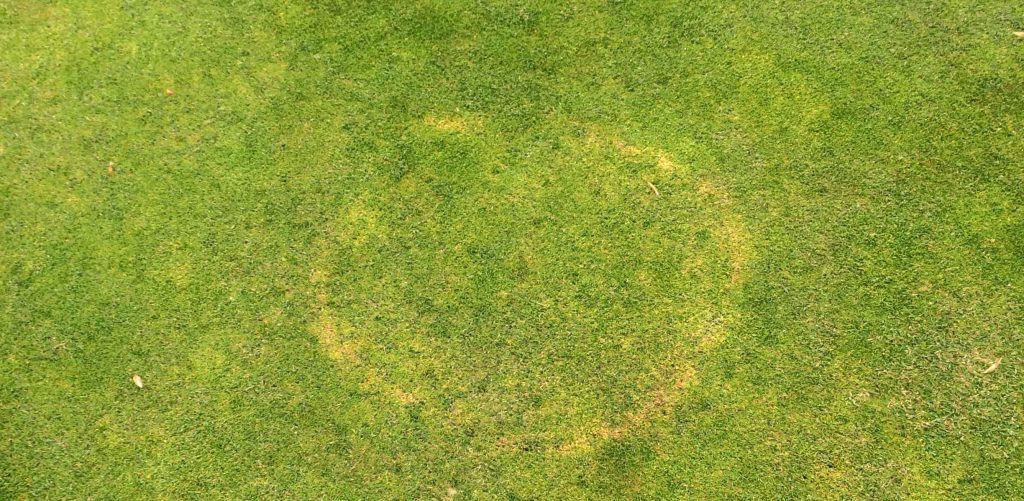
Fairy Ring
Fairy ring is frequently confused with brown ring patch and comes in three types. In type I fairy ring, fungi decompose organic matter, their mycelium covering soil particles. The mycelium covering results in hydrophobic soil conditions, which lead turf to die in rings, arcs or patches. Type I is the most dangerous. With type II, fairy rings occur as dark green rings or arcs and grow faster than the surrounding turf. These rings or arcs occur mostly in turf that is nitrogen and iron deficient. Mushrooms or puffballs are produced in Type III fairy ring. The mushrooms or puffballs appear in rings or arcs on the surface and are generally observed after a heavy rain or on over-irrigated turf.
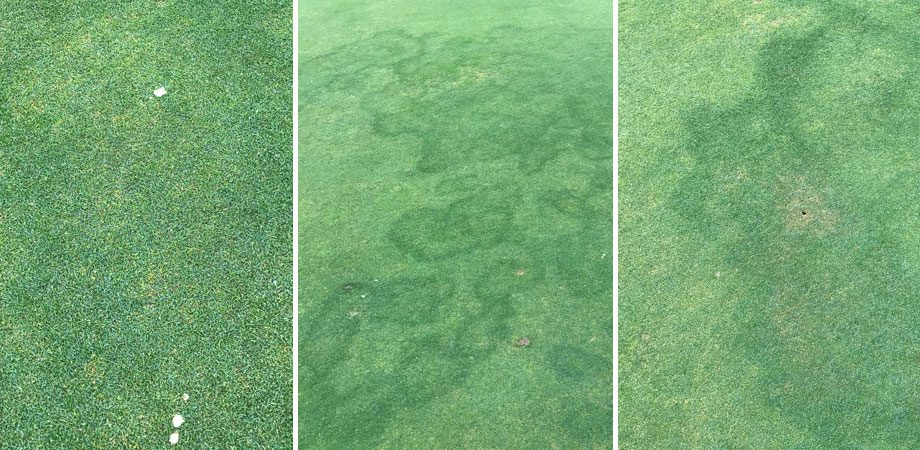
If you do not have time to wait for lab results and are not certain whether your issue is fairy ring or brown ring patch, ArmorTech TEB XL 360 is effective at treating both diseases. Regardless of which disease you encounter, in the spring it takes longer for infected/affected plants to clear up. In four to six days after treatment, new, healthy shoots will be more evident. Gray, cool weather can drastically slow the recovery, however.







